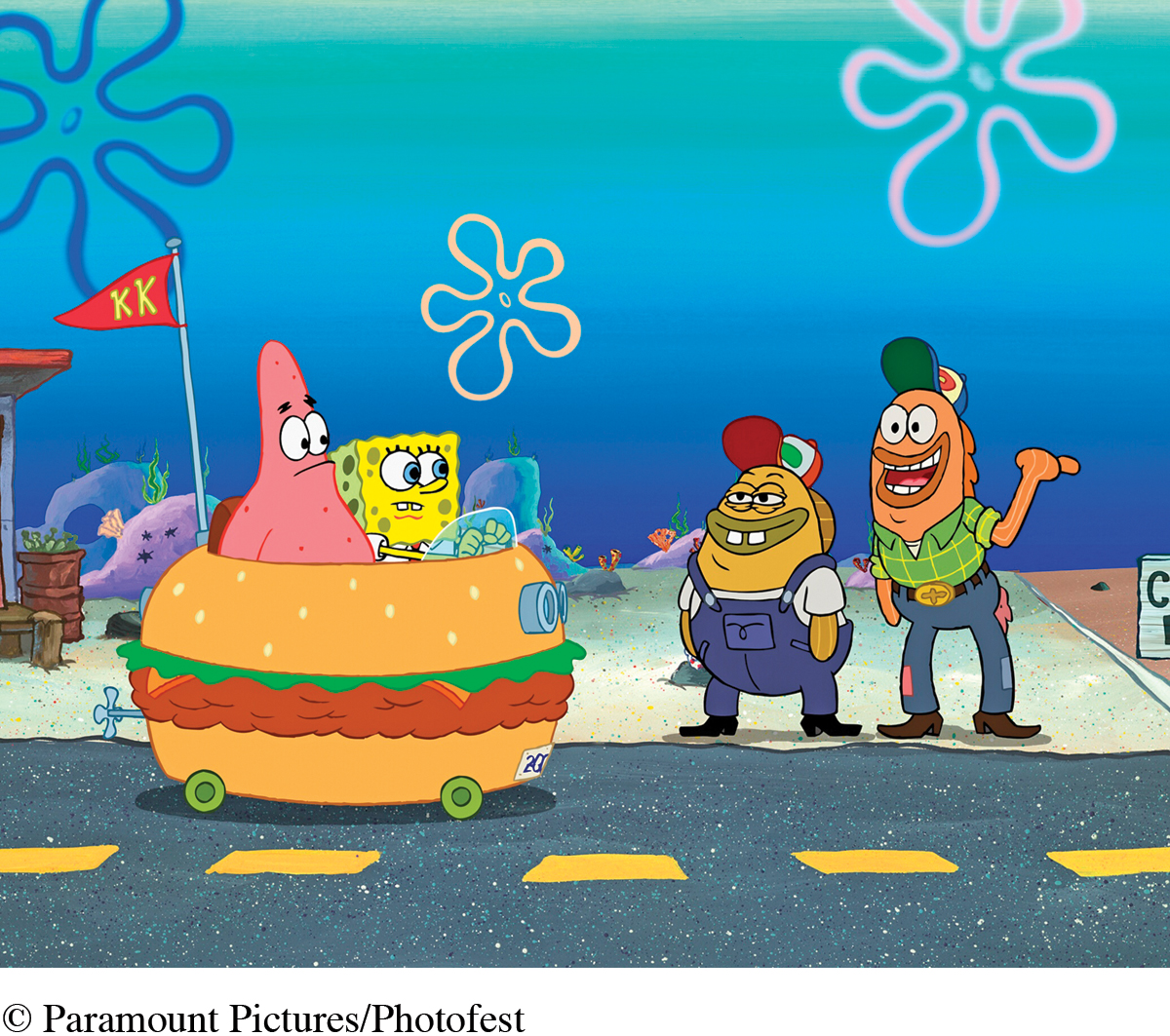Introduction to Chapter 13

He is the only animated character in history to have a wax likeness in Madame Tussauds New York museum. He has inspired albums, video games, and theme park rides. The media franchise controlling his image is an $8 billion global industry. But the story of SpongeBob SquarePants is not one of a solitary sea sponge sitting alone at the bottom of the ocean. Instead, it’s a tale of friendship and the deep and recognizable connections that exist between the characters.
SpongeBob is the brainchild of marine biologist and animator Stephen Hillenburg. While working at the Ocean Institute in California, Hillenburg created a comic titled “The Intertidal Zone,” to educate students about oceanic animal life. Inspired to expand the characters into an animated feature, he pitched the plan to Nickelodeon executives, accompanied by Hawaiian music and an underwater terrarium. Nickelodeon funded the project, and the series was born.
At the center of the show are the friendships SpongeBob shares with Sandy, Squidward, and Patrick. Sandy is a consistent voice of reason, supporting SpongeBob when he gets into trouble by offering useful advice. In “MuscleBob Buffpants” (season 1, episode 11a), for instance, Sandy helps SpongeBob with his strength training, although her exercise regimen proves too daunting (SpongeBob ends up buying inflatable muscle arms instead). The support goes both ways. In “House Sittin’ for Sandy” (season 8, episode 165a), she asks SpongeBob to take care of her Treedome while she is away. When the result is disastrous, Sandy forgives him.
Although Squidward delights in insulting SpongeBob, beneath his gruff exterior he seems to harbor genuine affection for his spongy friend. In the episode “Squidville” (season 2, episode 26b), Squidward becomes so enraged by SpongeBob’s reef-blower play that he explodes, “I would rather tear out my brain stem, carry it to the middle of the nearest four-way intersection, and skip rope with it than go on living where I do now!” But when he moves away, he finds himself missing his former neighbor.
SpongeBob’s best friend is Patrick. Whether it’s chasing jellyfish, selling chocolates, or playing “Robot-Pirate Island” in an empty cardboard box, they do almost everything together. At the core of their friendship is emotional support. In “Big Pink Loser” (season 2, episode 23a), Patrick is heartbroken when he realizes he has never won an award. SpongeBob immediately steps up, coaching Patrick through the task of opening a jar. When Patrick finally (after many failed attempts) succeeds, they mutually celebrate Patrick’s “triumph.”
SpongeBob’s friendships are not without challenges, however. He betrays Sandy by mocking squirrels as part of his comedy act (“What’s up with that squirrel fur? I guess fleas need a home, too!”). Patrick gets SpongeBob into trouble at school by drawing an insulting picture of the teacher, then allowing SpongeBob to take the blame. SpongeBob is consumed with jealousy when Patrick replaces him as Grandma Sponge’s “baby.” But despite these difficulties, the friends always manage to maintain their relationships.
SpongeBob SquarePants has won multiple Emmys, Kids’ Choice Awards, and BAFTA Children’s Awards. Images of SpongeBob have been embraced by groups as diverse as American schoolchildren and Egyptian revolutionaries. But the resonance of the show lies within a text deeper than its silliness. When we watch SpongeBob, we’re reminded of the complexities of our own friendships. Our friends are people who are similar to us, but annoy us. They help us and have our backs, but also hurt us. They lift us up but can also tear us down. Ultimately, though, our friends are the people we choose to share our lives with because, beyond everything else, we enjoy their companionship.
It may strike you as strange to think of your friendships as similar to those of an animated sea sponge who lives in a pineapple. Nevertheless, the friendships that fill our lives are akin to SpongeBob’s in important ways. We are drawn to our friends through the realization of shared interests. We count on our friends to provide support. We build our friendships by disclosing our thoughts, feelings, and vulnerabilities, while trusting our friends to not betray us. At the same time, our friendships can be difficult to define. They lack the permanence of family bonds and the clear constraints and expectations of romantic involvements. This makes them more fragile and confusing than other close relationships.
In this chapter, we look at friendship. You’ll learn:
How friendships are unique and distinct
Varied types of friendships you’ll experience
Ways you can communicate so that your friendships survive and thrive
Challenges to friendships and how to overcome them